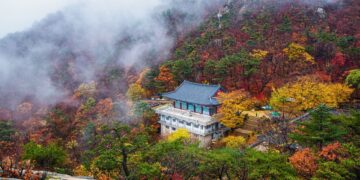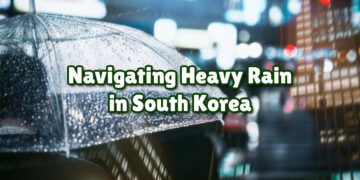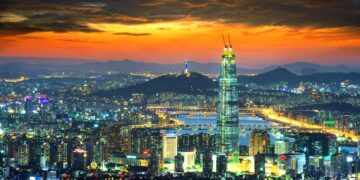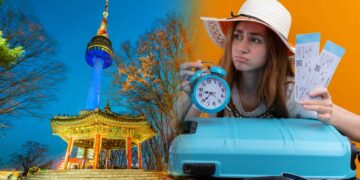When you think of Seoul, South Korea, one of the first images that likely comes to mind is the serene, expansive river cutting through the heart of the bustling city. Whether you’ve seen it in K-dramas, travel vlogs, or glossy Instagram shots, the Han River—wait, or should we say Hangang River?—is a must-visit. But really, should we call this magical treasure of Seoul, Korea the Han River or Hangang River? Let’s dive into the story behind this iconic waterway and settle the debate once and for all!
The Name Game: Han River vs. Hangang River
So, here’s the deal: The Seoul Metropolitan Government recently recommended that everyone, from media outlets to everyday tourists, start calling it the Hangang River. If you’re scratching your head thinking, “Isn’t that saying ‘Han River River’?” well, yeah, you’re not alone.
In Korean, Hangang (한강) literally means “Han River,” with gang (강) translating to “river.” Therefore, if you add another “river” after “gang,” it just basically feels repetitive. While the Seoul government aims to clear up confusion among foreign visitors with this update, ironically, it’s stirred up more questions instead.

Actually, this debate isn’t new. Back in 2010, Seoul officials designated the official English name as Hangang River for promotional purposes. Then, in 2020, the Ministry of Culture, Sports, and Tourism doubled down, introducing a rule to Romanize Korean natural landmark names followed by an English descriptor. For example, they insist using the official terms of Hallasan Mountain for Mount Halla in Jeju, and Yongdampokpo Falls for the Yongdam Falls in North Chungcheong.
But for the record, the terms “san” and “pokpo” also translate to “mountain” and “falls” respectively. So locals in South Korea still insist to call it Han River in casual conversations.
A Seoul River by Any Other Name: Why It Matters
While the name might seem trivial, it’s all about perspective. For Seoul, standardizing the name actually aligns with efforts to elevate the city’s tourism game. After all, the Han/Hangang River has been one of the most a vibrant travel destinations for outdoor activities, festivals, and unforgettable nighttime cityscapes in Seoul.
Indeed, imagine sitting on the riverbank at Yeouido Hangang Park, munching on Korean fried chicken and sipping beer as the skyline sparkles. Or kayaking along the calm waters, soaking in the city’s dynamic energy. These moments define Seoul. Whether you call it Han River or Hangang River, it remains a cultural and natural treasure.

Han River or Hangang River: What Should You Call It?
So, here’s our advice: just don’t sweat it! If you’re chatting with locals, Han River works just fine. Want to sound like a well-researched traveler? Go with Hangang River—especially if you’re reading official signs or guides.
But as for the key takeaway? Whether Han or Hangang, this Seoul most popular river offers something for every kind of traveler. From romantic strolls to adrenaline-pumping water sports, the experiences here speak louder than labels.

Must-Do Activities Along The Most Popular River in South Korea
- Biking Adventures
Rent a bike and explore the scenic Hangang River trails. With miles of dedicated paths, it’s the perfect way to feel the pulse of the city while enjoying a leisurely ride. - Nighttime Picnic at Banpo Bridge
Don’t miss the Banpo Bridge Rainbow Fountain, a dazzling water show set to music. Pack some chimaek (chicken and beer), and you’ve got yourself an iconic Seoul evening. - Cruise the River
Take a Hangang River cruise for breathtaking views of Seoul’s skyline. Whether it’s a romantic dinner cruise or a daytime sightseeing tour, it’s an experience you won’t forget. - Hangang Summer Festival
Visit during summer to enjoy the annual Hangang Festival, featuring cultural performances, food markets, and outdoor movie screenings.
So, What’s in a Name?
At the end of the day, whether you call it the Seoul Han River or Hangang River, one thing is certain: this iconic waterway is one of the most crucial soul of South Korea travel. Its parks, bridges, and stunning views make it a destination you can’t afford to miss.
Therefore, the next time you’re planning your South Korean itinerary, carve out a day—or three—for the river that’s the lifeblood of this incredible city. Call it whatever you want, but make sure to experience its magic firsthand.
And hey, if you’re still torn about what to say, just remember: Seoul’s charm speaks louder than words!
Related Posts
2,991 total views, 2 views today

















